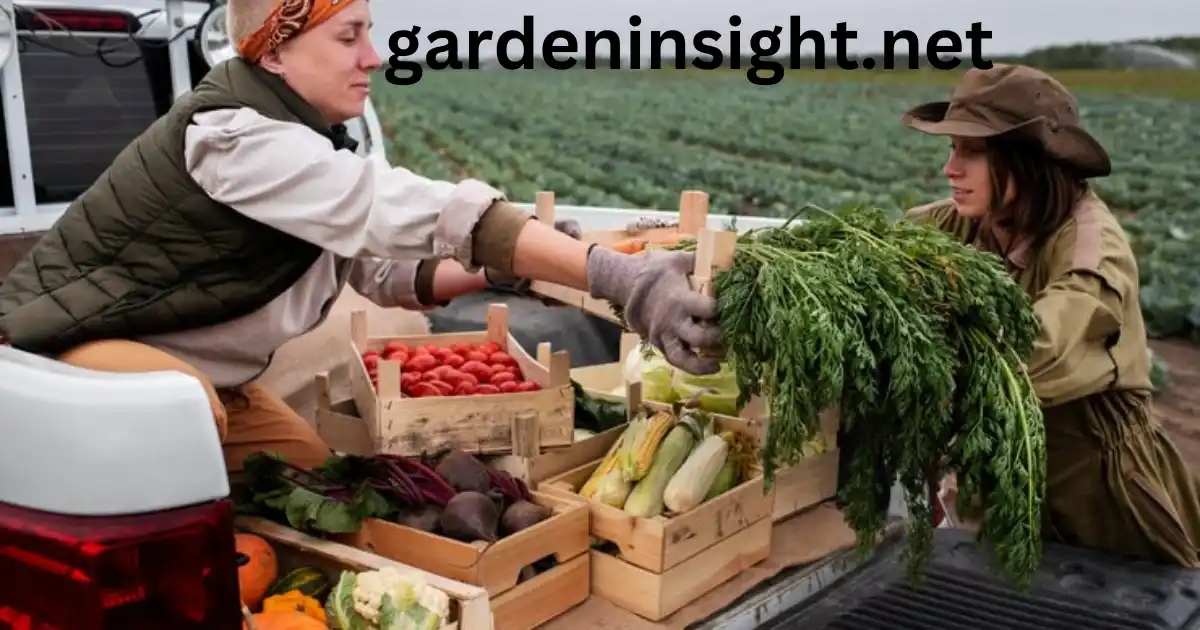Commercial gardening, often called market gardening, is the practice of growing fruits, vegetables, flowers, and other plants for sale.
Unlike a home garden, where the goal is to provide food for a family, commercial gardening focuses on producing large quantities of high-quality crops for profit.
These crops are typically sold to wholesalers, retailers, restaurants, or directly to consumers at farmers’ markets.
Types of Gardening on Commercial Level
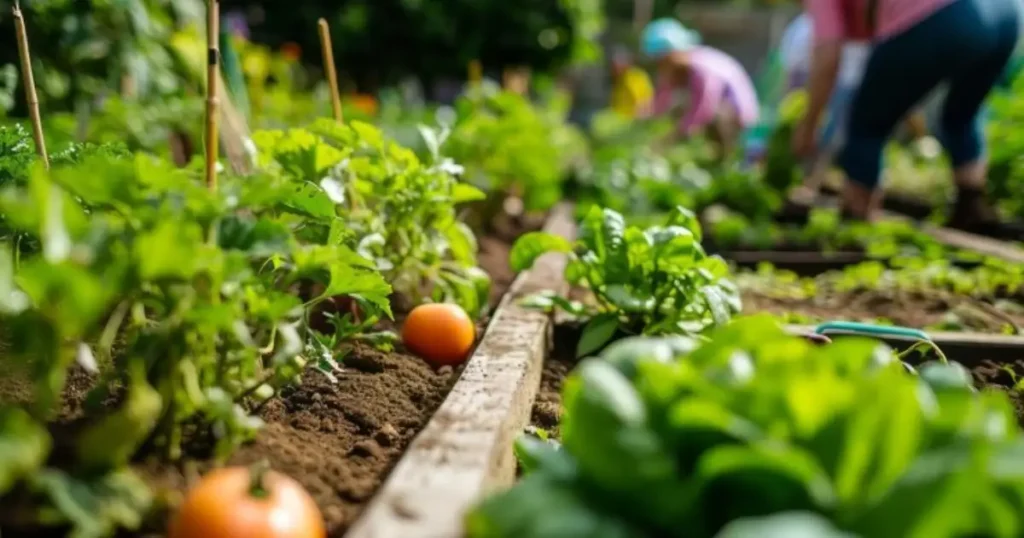
Commercial gardening takes many forms, each with its own focus and methods:
- Vegetable Gardening: This is the most common type, focusing on growing a wide variety of vegetables like tomatoes, lettuce, cucumbers, and peppers.
- Fruit Farming: Orchards and vineyards fall under this category, with a focus on cultivating fruits like apples, oranges, grapes, and berries.
- Floriculture: This type specializes in growing flowers and ornamental plants for bouquets, landscaping, and events.
- Nursery Gardening: Nurseries propagate and grow young plants, shrubs, and trees, selling them to landscapers, garden centers, and the general public.
- Herb Gardening: This involves growing herbs like basil, mint, and rosemary for culinary, medicinal, or cosmetic use.
How Does Commercial and Traditional Gardening differ?
While both involve growing plants, commercial gardening and traditional gardening differ in several key ways:
| Feature | Commercial Method | Traditional Method |
|---|---|---|
| Scale | Large-scale production | Small-scale, often for personal use |
| Purpose | Profit-driven | Primarily for personal consumption |
| Technology | Often uses advanced technology | May rely on manual labor |
| Crop Selection | Focus on high-yield, marketable crops | Wider variety based on personal preference |
| Labor | May employ many workers | Usually done by family members |
Benefits of Commercial Gardening
Commercial method of gardening offers several benefits, both economic and environmental:
- Provides Fresh Produce: It supplies communities with fresh, locally grown fruits and vegetables, promoting healthy eating habits.
- Supports Local Economies: Creates jobs and boosts local economies through the sale of produce and related products.
- Reduces Food Miles: By growing food locally, it reduces transportation distances, minimizing carbon emissions and environmental impact.
- Promotes Sustainable Practices: Many commercial gardens adopt sustainable methods like organic farming and water conservation.
- Preserves Green Spaces: Helps preserve farmland and green spaces, contributing to biodiversity and ecological balance.
Which Crops are Best for Commercial Gardening?
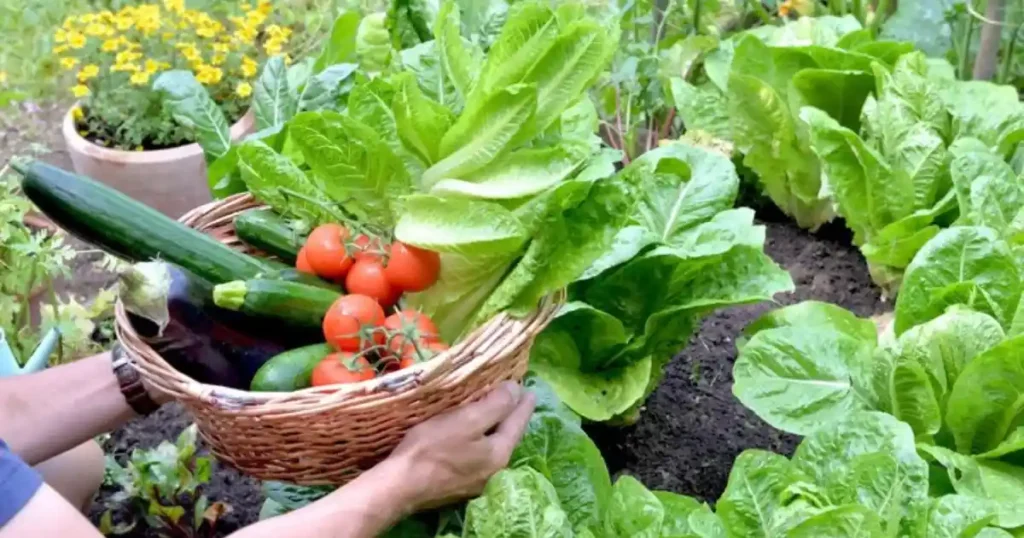
The best crops for commercial method of gardening depend on various factors, including climate, soil conditions, market demand, and the grower’s expertise. However, some popular and profitable choices include:
- High-demand vegetables: Tomatoes, lettuce, cucumbers, peppers, onions
- Fruits: Strawberries, blueberries, apples, grapes
- Herbs: Basil, cilantro, mint, parsley
- Specialty crops: Organic produce, exotic fruits, edible flowers
What Tools are Used in Commercial Gardening?
Commercial gardeners utilize a variety of tools and equipment to efficiently manage their operations:
- Tractors and tillers: For preparing the soil and planting crops
- Irrigation systems: To ensure proper watering
- Greenhouses and shade houses: To control growing conditions
- Harvesting equipment: Specialized tools for different crops
- Post-harvest handling equipment: For cleaning, sorting, and packing produce
How Do You Start a Commercial Gardening Business?
Starting a commercial gardening business requires careful planning and execution. Here are some key steps:
- Develop a Business Plan: Outline your goals, target market, crop selection, and financial projections.
- Secure Land and Resources: Find suitable land, water sources, and necessary equipment.
- Choose Your Crops: Select crops that are well-suited to your climate and market demand.
- Implement Sustainable Practices: Consider organic farming methods, water conservation, and integrated pest management.
- Market Your Products: Establish relationships with wholesalers, retailers, and consumers.
What is the Role of Technology in Commercial Gardening?
Technology plays an increasingly important role in modern commercial method for gardening:
- Precision Agriculture: Uses sensors and data analysis to optimize irrigation, fertilization, and pest control.
- Vertical Farming: Growing crops in vertically stacked layers, maximizing space and resource efficiency.
- Hydroponics and Aeroponics: Growing plants without soil, using water or air as the growing medium.
- Robotics and Automation: Automating tasks like planting, weeding, and harvesting.
What are the Challenges of Commercial Gardening?
Commercial method for gardening faces various challenges:
- Climate Change: Extreme weather events, droughts, and changing growing seasons can impact crop yields.
- Pest and Disease Management: Protecting crops from pests and diseases requires careful monitoring and control measures.
- Labor Shortages: Finding and retaining skilled labor can be difficult.
- Market Volatility: Fluctuating prices and consumer demand can affect profitability.
- Environmental Impact: Intensive farming practices can contribute to soil erosion, water pollution, and habitat loss.
What Tools are Used in Commercial Gardening?
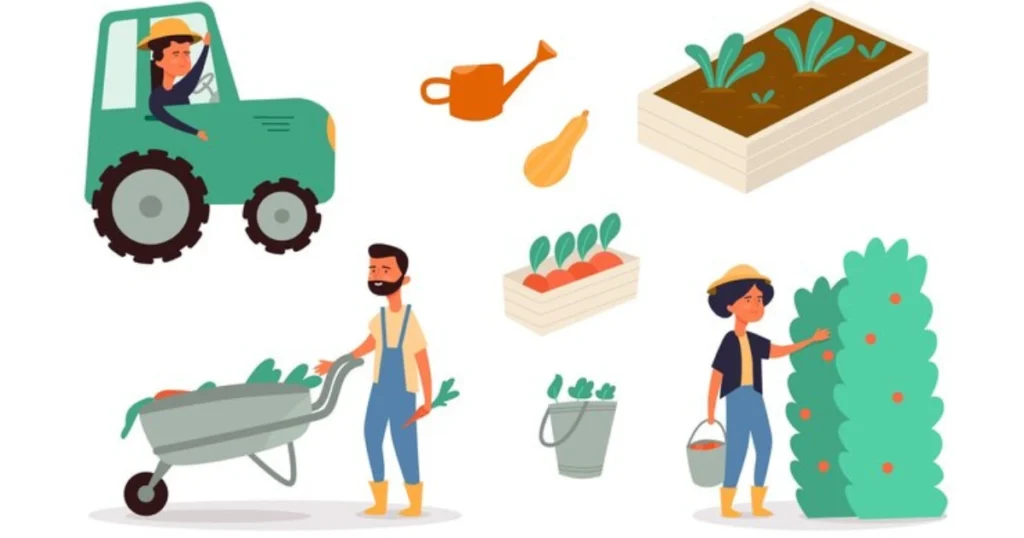
Commercial gardeners utilize a variety of tools and equipment to efficiently manage their operations:
- Tractors and tillers: For preparing the soil and planting crops
- Irrigation systems: To ensure proper watering
- Greenhouses and shade houses: To control growing conditions
- Harvesting equipment: Specialized tools for different crops
- Post-harvest handling equipment: For cleaning, sorting, and packing produce
How Does Commercial Gardening Impact the Environment?
Commercial gardening can have both positive and negative impacts on the environment:
- Positive Impacts:
- Provides fresh, local produce, reducing food miles
- Can promote sustainable practices like organic farming and water conservation
- Helps preserve green spaces and biodiversity
- Negative Impacts:
- Intensive farming can lead to soil erosion, water pollution, and habitat loss
- Pesticide and fertilizer use can harm ecosystems
- Requires significant energy and water resources
What Climate is Commercial Gardening Practiced in?
Commercial gardening can be practiced in a variety of climates, but it generally thrives in regions with:
- Adequate sunlight: Most crops require ample sunlight for photosynthesis.
- Sufficient rainfall or access to irrigation: Water is essential for plant growth.
- Fertile soil: Nutrient-rich soil supports healthy plant development.
- Moderate temperatures: Many crops prefer moderate temperatures for optimal growth.
However, with the use of technology like greenhouses and controlled environment agriculture, commercial gardening can be successful even in challenging climates.
What is the Future of Commercial Gardening?
The future of commercial gardening is likely to be shaped by several trends:
- Increased Sustainability: Growing consumer demand for organic and sustainably produced food.
- Technological Advancements: Continued adoption of precision agriculture, vertical farming, and automation.
- Climate Change Adaptation: Developing resilient farming practices to cope with changing climate conditions.
- Urban Agriculture: Growing food in urban areas to increase local food production and reduce transportation distances.
- Focus on Food Security: Addressing global food security challenges through innovative and efficient farming methods.
What Climate is Commercial Gardening Practiced in?
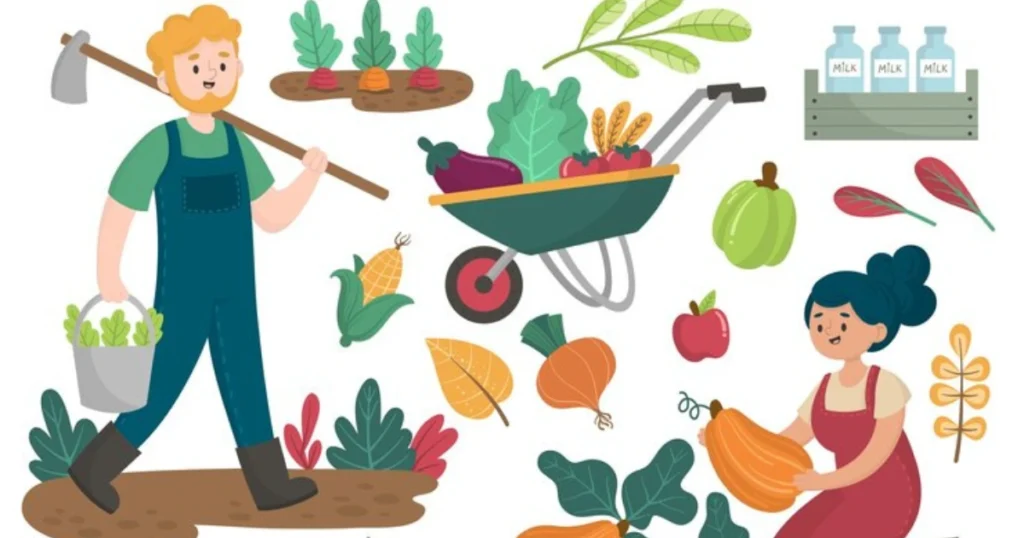
Commercial gardening can be practiced in a variety of climates, but it generally thrives in regions with:
- Adequate sunlight: Most crops require ample sunlight for photosynthesis.
- Sufficient rainfall or access to irrigation: Water is essential for plant growth.
- Fertile soil: Nutrient-rich soil supports healthy plant development.
- Moderate temperatures: Many crops prefer moderate temperatures for optimal growth.
However, with the use of technology like greenhouses and controlled environment agriculture, commercial gardening can be successful even in challenging climates.
FAQs
Some of the frequently inquired questions about gardening on commercial scale are as follow:
What is grown in commercial gardening?
Crops like vegetables, fruits, and flowers are commonly grown, depending on market demand and climate suitability.
What is commercial gardening agriculture?
It is a branch of agriculture focused on producing crops at a commercial scale for profit.
How does commercial gardening differ from traditional gardening?
Traditional gardening is for personal use, while commercial gardening targets market demand with advanced techniques.
What are the challenges of commercial gardening?
Challenges include climate change, pests, market fluctuations, and high setup costs.
What are the benefits of commercial gardening?
It boosts economic growth, ensures food supply, and promotes technological advancements.
